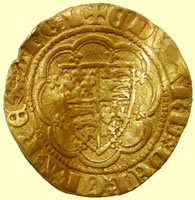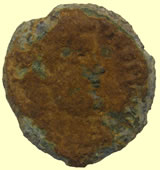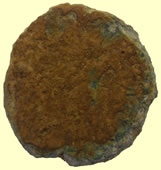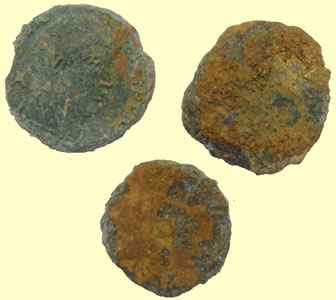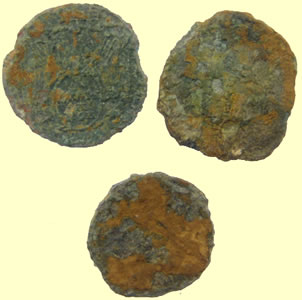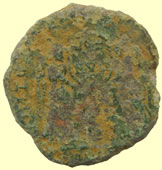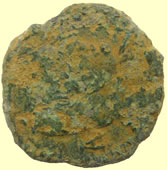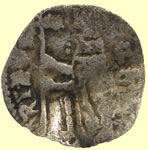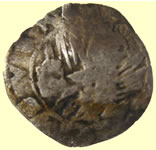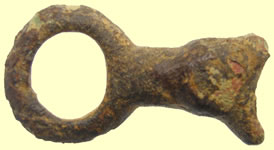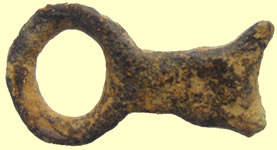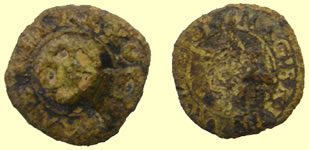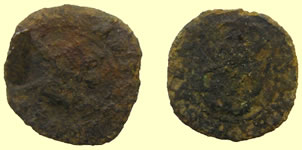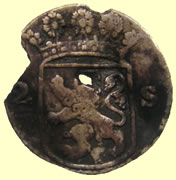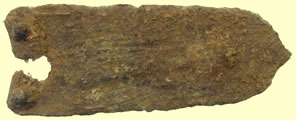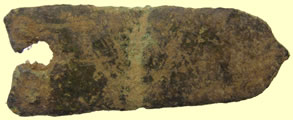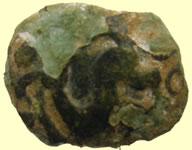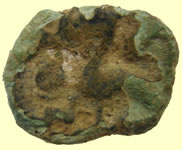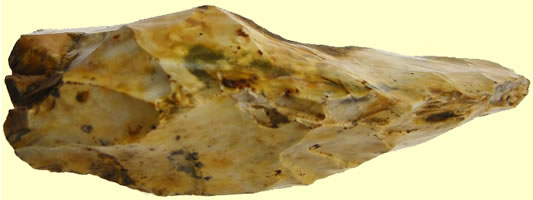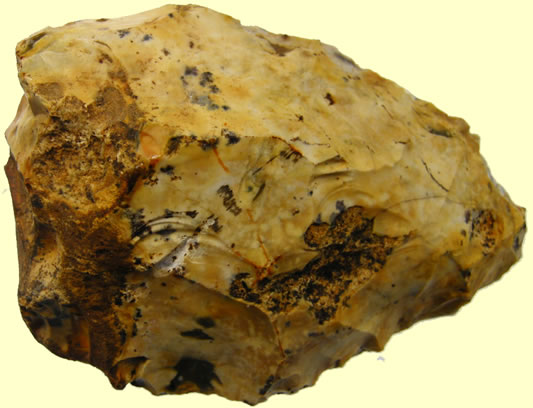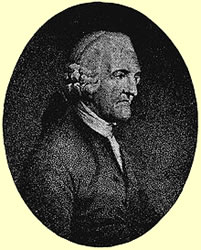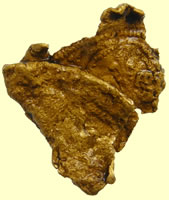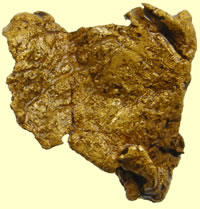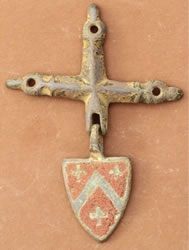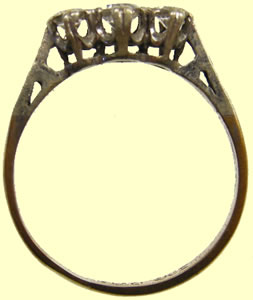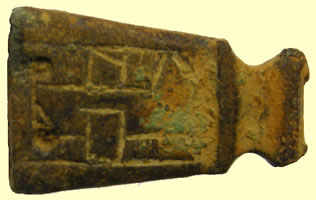

Metal detecting holidays in England with the World's most successful metal detecting club.
Twinned with Midwest Historical Research Society USA
| 2013 Oct finds page |
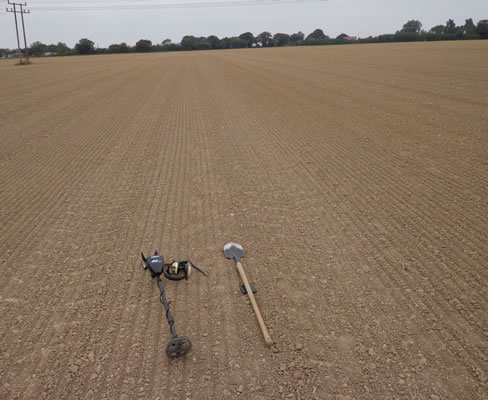 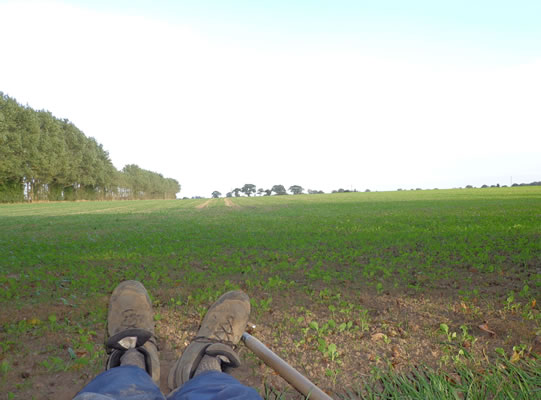 |
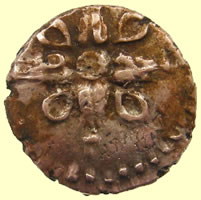 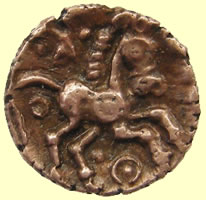 |
|||
Addedomaros 45BC Celtic gold qtr stater - sent to CCI for recording 13.22mm, 1.33g It's always good to see another one of these, the obverses of this particular type of Addedo quarter are a nightmare to die link because they're so similar so the more examples there are the better; I've recorded it as 13.0558. Best Wishes John |
|||
1363 -69 Edward III hammered gold 1/4 noble - Treaty series Curule shaped X - Lis in centre of reverse Obv EDWARDxDEIxGRAxREXxANGL 18.58mm,1.84g |
|||
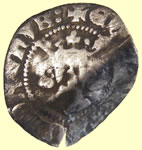 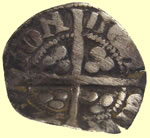 |
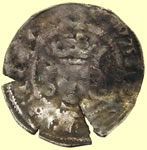 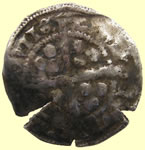 |
||
1356 - 61 Edward III hammered silver penny - Cross 3 pre Treaty G Obv +EDW***ANGL DNS HYB Rev CIVI/TAS/ LON/DON - London mint |
1356 - 61 Edward III hammered silver penny - pre Treaty C to G Obv DWA***** Rev CIVI/TAS/DVNE/LMIE - Durham mint |
||
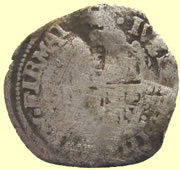 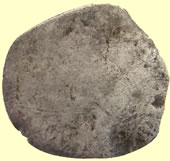 |
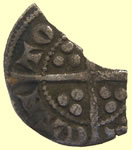 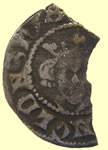 |
||
| 1625 Charles 1st hammered silver half groat | 1272 Edward Ist hammered silver penny Obv ***ANGL DNS HYB Rev CIVI/TAS/CAN/TOR- Canterbury mint |
||
Magnentius & Decentius - a fairly short-lived (350-353 AD) Augustus/Caesar pair
5 Roman bronze coins just found in small area from a previous disclaimed hoard. The write up below is from Mark Lehman on the previous hoard.
Unless I am mistaken, all 7 of these belong to the brother team of Magnentius & Decentius - a fairly short-lived (350-353 AD) Augustus/Caesar pair of the sort promoted to Augustus, ad-hoc, by their legions. This was a very common story during the chaos-years of the later 3rd century, but happened far less often in the 4th. Magnentius had been a top general of Constans' - his army proclaimed him Augustus and since Constans did him the favor of being captured and executed conveniently quickly - within a few months - Magnentius was duly recognized as Augustus in most of the Western provinces in 350. The next year he elevated his little brother Decentius to be his colleague Caesar.
Constantius II was not pleased by the Western upstarts and within 2 years had defeated them in a couple of significant battles. Realizing the jig was up, they both committed suicide in 353.
Although these reverse types are known for other rulers (for whom they are pretty rare), they are especially associated with Magnentius & Decentius, both of whom were always portrayed "bare headed" - no laurels or diadems, etc. - and both of whom sported distinctive "mullett" hairdos like you see on the clearest specimens here. Since I believe the obverse legend on that nice one of Bruce's ends in "AVG", I'd say it's most likely Magnentius. Any on which the obverse legend ends (around 5:00) in CAES, CAESAR, NOB C, or NC can safely be assumed to be Decentius.
The type with the 2 Victories resting shield inscribed: VOT / V / MVLT / X on a cippus (or just holding it between them) woul have a legend like: VICTORIAE DD NN AVG ET CAES - and was common for both of them. The large Chi-Rho Christogram reverse was used on both the centenionalis and short-lived double-centenionalis denominations - it's not really scarce, but is sought-after making it a bit more expensive for those wanting to buy one. This is a common factor in ancient coins, those with some sort of "religious" reference are always found desirable by folks who have no other interest in ancient coins, thereby driving up the prices (like the so-called "Tribute Penny" denarius of Tiberius - of which your diggers have found several - which is the most common silver coin of the early 1st century, but sells for 3-4 times as much as any other).
This pair struck only in the Western mints: Amiens, Trier, Lyon, Arles, Aquilea, Rome and Siscia
|
|||
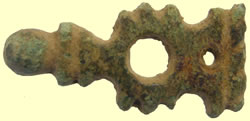 |
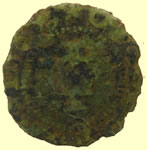 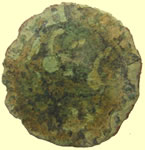 |
||
| Medieval book clasp | 1666 Thomas Peeke of Colchester hammered copper trade farthing |
||
 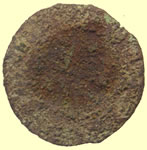 |
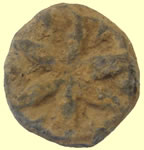 |
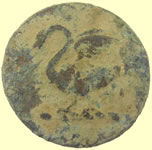 |
|
| 1666 Colchester hammered copper trade farthing | 15thC lead token | 19thC livery button | |
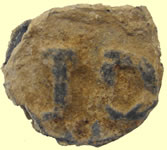 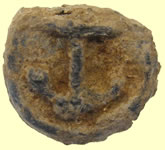 |
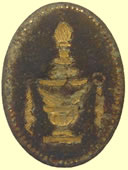 |
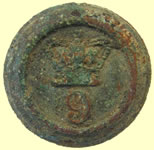 |
|
| 17thC Ppewter trade token | Georgian cuff link | 19thC The 9th Regiment of Foot was an infantry line regiment of the British Army from 1751 to 1881. It became the Norfolk Regiment following the Army reforms of 1881. |
|
|
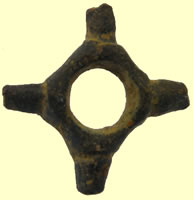 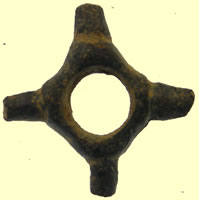 |
||
Soldino of Antonio Venier (ANTO.VEN-ERIO.DVX.)
Obverse description: Doge kneeling left holding banner. Often mint control marks to right (a star/letters).
|
C10th C Saxon harness strap distributer |
||
 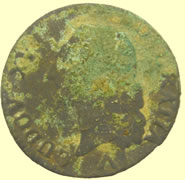 |
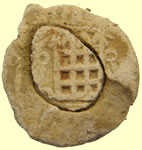 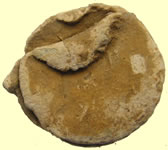 |
||
| 1785 Continental copper coin ?? | Post medieval lead cloth seal | ||
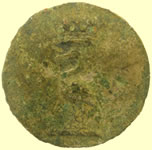 |
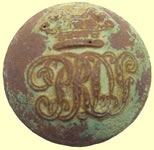 |
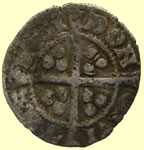 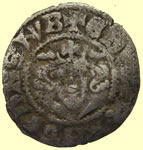 |
|
| 19thC livery button | 7th (The Princess Royal's) Dragoon Guards | 1272 Edward Ist hammered silver penny - Class 10 Obv +EDWRR ANGL DNS HYB Rev CIVI/TAS/ LON/DON - London mint |
|
 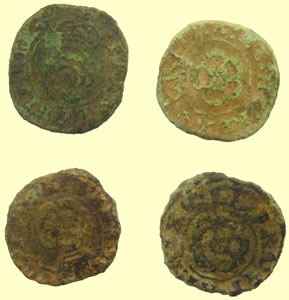 |
|||
| 4- 1623 Charles 1st hammered copper rose farthings | |||
 |
 |
|
|
| WWII Air raid police button | 16thC Tudor clothing fastener | Medieval book clasp | |
|
 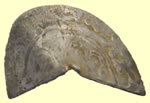 |
||
| C10thC Saxon harness cheek piece | 1215 Henry III hammered silver short cross half penny | ||
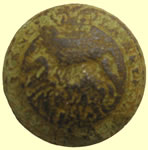 |
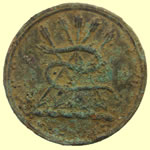 |
||
Unlisted button - Crimea war's period THE 5TH. (PRINCESS OF WALES'S) DRAGOON GUARDS |
19thC livery button | ||
  |
 |
||
| Victorian silver rimmed shell brooch | Georgian casket key | ||
  |
 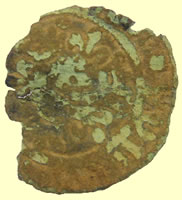 |
||
| Post medieval lead bale seal | 1586 Hans Krauwincel II Rose orb Jetton HANNS KRAVWINCKEL IN NVRENB |
||
  |
|||
| Interesting decorated Roman widget - reminds me of a protected loop terret- one for the museum guys | |||
 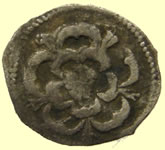 |
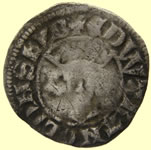 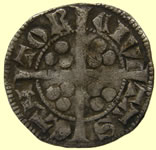 |
||
Probably one of the smallest hammered silver coins you can find, 1/3rd the weight of a Medieval silver farthing 1625-42 Charles 1st hammered silver half penny - Rose each side - no legend type |
1272 Edward 1st hammered silver penny - Class 11b - pointed E &C Obv +EDWAR ANGL DNS HYB Rev CIVI/TAS/CAN/TOR - Canterbury mint |
||
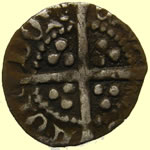 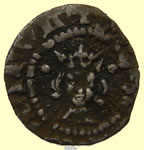 |
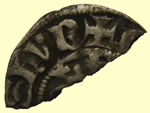  |
||
1422- 61 Henry VI hasmmered silver half penny - Leaf -Pellet issue - pellets to each side of crown Obv + hENRIC REX ANGLI Rev CIVI/TAS/ LON/DON - London mint |
1272 Edward 1st hammered silver penny - Egg wasted S, Class 3f to 8a Obv +E ******S HYB Rev CIVI/TAS/ - Type |
||
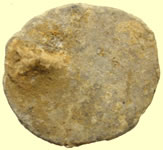 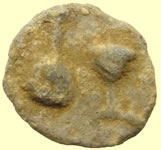 |
 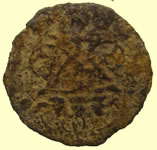 |
||
| 16thC Elizabethan illegal tavern lead token | 2 skillings of Frederik III of Denmark, dating 1655 | ||
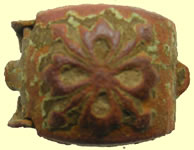 |
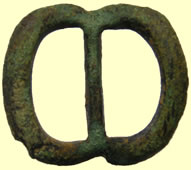 |
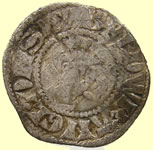  |
|
| Edwardian copper clasp | Post Medieval cast copper alloy single loop buckle frame. 1500-1650 AD |
1280-82 Edward 1st hammered silver half penny - thick wasted S - Type 2 Obv +EDWR ANGL DNS HYB Rev CIVI/TAS/ LON/DON - London mint 15.47mm,0.58g |
|
|
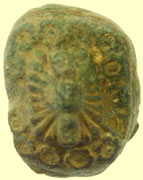 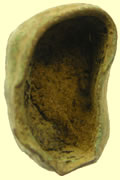 |
||
| 2- 1623 Charles 1st hammered copper rose farthings | Georgian fob seal matrix holder | ||
 |
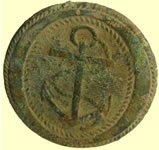 |
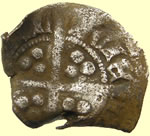 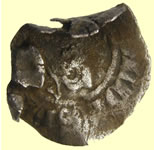 |
|
| Unknown military button | RN Capt / Commander - 1787 RN Lieutenant - 1787 |
1272 Edward 1st hammered silver half penny | |
  |
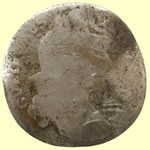  |
||
1247 Henry III hammered silver voided long cross half penny Obv hENRICVS REX Rev ONL/VND - London mint |
1696 William III milled silver sixpence | ||
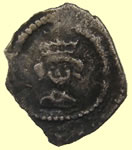 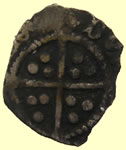 |
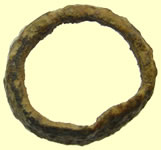  |
||
| 1377-1399 Richard II hammered silver farthing | 15thC open topped thimble | ||
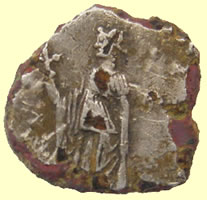 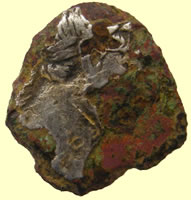 |
|||
2ndC Contemporary Roman silver coin forgery - copper inner with thin sheets of silver covering - sent for ID Since there's no legend at all and only part of the bust remains, we must go by "pattern recognition" here, but to my eye it appears to have been a Felicitas (I say this based on interpreting the object the personification on the reverse is holding as a caduceus) denarius of Hadrian (117-138) that was being copied here. The workmanship is really quite good on the obverse so you can see how a whole example of this could be passed easily in any situation where coins were not being weighed or minutely examined on an individual basis. A couple of these could be slipped into a bag of coins in some situation where coin was regularly handled in bulk and over time it could be a highly profitable, relatively low-risk operation. Mark |
|||
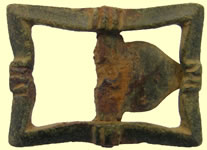 |
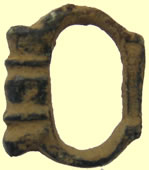 |
 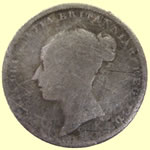 |
|
Cast copper alloy trapezoidal shoe or knee buckle with concave sides 1660-1720 |
Medieval buckle | 1842 Victoria milled silver sixpence | |
  |
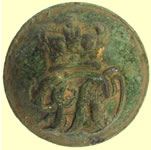 |
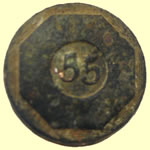 |
|
Georgian pipe tamper |
Royal Engineers George Rex |
55th Regiment of Foot 1800-1820 |
|
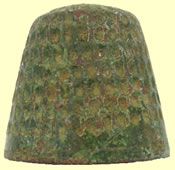 |
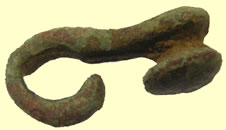 |
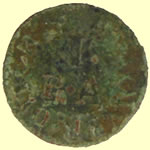 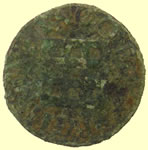 |
|
| 17thC thimble | Georgian spur buckle fitting | Cannot find this 17thC hammered coppper trade farthing in the ref books - London token Portcullis on Rev Obv *IN TOWER DITCH Rev PHILL** IACOB - PIA |
|
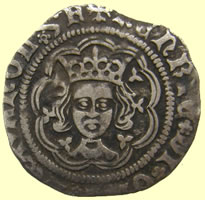 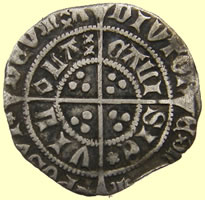 |
|||
Stunning strike of a 1430 -1431 Henry VI hammered silver half goat with a very crisp legend- Perfect Rosette Mascle issue as seen clearly in the legends IM Cross IIIb, mascule and rosettes stops - 9 arches to tressure, fleurs on cusps, none over crown Obv + hENRIC' DI*GRA REX ANGL *Z F Rev VIL/LA/CALI/SIE - Calais mint - mascule before LA - rosette after SIC POSVI*/DEVMx/DIVTOR/ExMEVM
|
|||
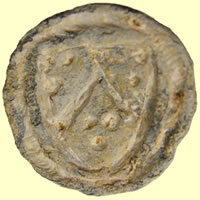 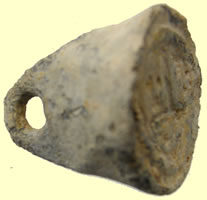 |
|||
Stunning lead early medieval heraldic seal matrix - never seen a lead example - impression is still very crisp so if it is on the existing 'Dering Rolls' we should be able to ID the owner
|
|||
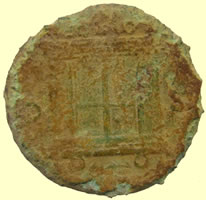 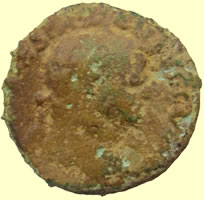 |
|||
Very unusual back on this large 2ndC Sestersius sized Roman coin - sent for ID Despite the size, this is not a sestertius - it's a 1st century As of Vespasian.(c. 71 - the earlier Asses were far more substantial than the Asses of the 2nd century which is what you are more commonly find) The reverse (your photo was upside-down, you can usually correctly orient a large Æ by looking for the "S-C") is an altar - in this case, the Ara Providentiae Augusti - which is believed to have been in the "Campus Martius" (Field of Mars) area - the large, flat and open piece of flood plain land surrounded by a loop of the Tiber, to the north of the ancient city (and downtown in present day Rome). This large open area in ancient times was used for drilling the army, political demonstrations, and other large public assemblies, like voting during the Republic or the elaborate funerals of the Imperial era. This altar was dedicated to the "providence" of Augustus, although what exactly was being remembered and celebrated here that Augustus had provided-for was either abstract or is unclear to us today. This reverse type was first used on a postumous commemorative As for the deified Augustus by Tiberius http://www.stoa.org/gallery/album87/06_Augustus_by_Tiberius It was a type which would see a lot of re-use. This As by Vespasian (yours, that is), similar Asses by Vitellius, Titus and Domitian in their own names with their portraits, and restoration types copying the original DIVVS AVGVSTVS PATER/PROVIDENT As (photo above) produced by both Titus and Domitian, then later by Nerva. This is an example of a similar type of As struck for himself (not a "restoration" type) by Domitian. Domitian, 81-96 AD. Æ As 28mm, 12.38gm, axis: 6:00 Nero also struck a very similar altar type for the Ara Pacis - the Altar of Peace. http://www.stoa.org/gallery/album434/06_Nero_As Altar types would become the main standard reverse type for the posthumous issues of the 3rd century - one of the most common coins of the time (270's) which was also extensively locally copied as a so-called "barbarous radiate", is a posthumous issue of Antoninianus for Claudius Gothicus with an altar reverse. http://www.stoa.org/gallery/album106/ML_13_Claud_II_Consecratio_Altar1
Do I recall correctly you sending me an image of one of these later CONSECRATIO posthumous altar issues of Gothicus for identification within the last year or so? Mark |
|||
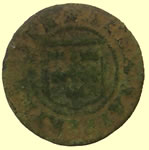 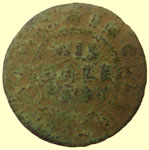 |
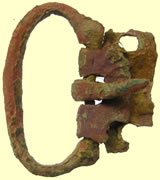 |
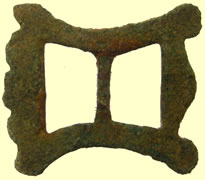 |
|
| 1665 Matthew Bonney, bakers of Colchster Essex hammered copper 'His Half Penny' token | Medieval buckle with plate | Cast copper alloy buckle frame 1500 -1700 |
|
 |
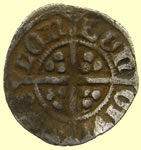 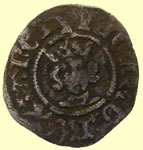 |
||
Britain's Merchant Navy Generic Design Issue In use 1900 's onwards |
1377-1399 Richard II hammered silver half penny - Type 1 (d) Obv + RICARDxREX xANGL Rev CIVI/TAS/ LON/DON - London mint |
||
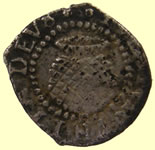 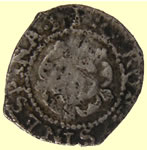 |
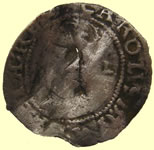 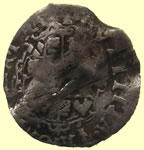 |
||
| 1603 James 1st hammered silver penny | 1625 Charles 1st hammered silver penny | ||
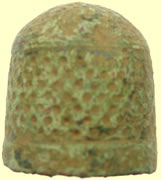 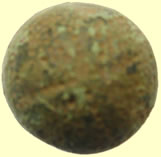 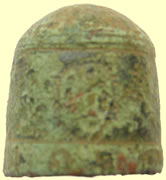 |
|||
| 17thC Dutch type thimble with crest and name | |||
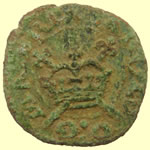 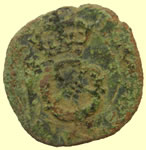 |
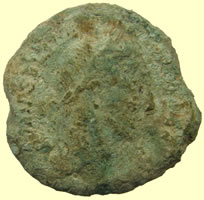 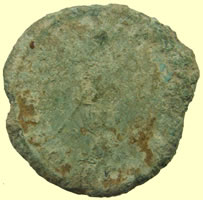 |
||
| 1634 Charles 1st hammered copper rose farthing | 2ndC Sestersius sized Roman coin - sent for ID Thanks for the metrics and additional photos. It seems I was looking at too early a time-frame. You so seldom seem to find coins of the Severan era that I don't immediately think of it. I can't be 100% certain, but I'm pretty sure that you have here an As of Severus Alexander, 222-235. At less than 10gm, it's highly unlikely to be a Sestertius, even in its chipped condition. There is an As of Sev. Alexander with Libertas standing, holding a pileus in right hand - the extended right arm could indicate this - and a transverse scepter. The legend on the reverse is a continuation of his laundry-list of titles and would contain "COS" for consul in the correct place for the clear "O" we can see on the reverse. Mark |
||
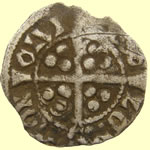 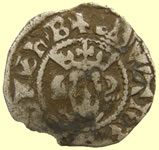 |
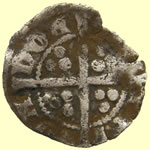 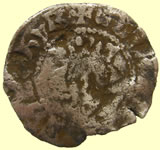 |
||
1344 Edward III hammered silver half penny - Florin issue Obv +EDWAR R ANGL DNS HYB Rev CIVI/TAS/ LON/DON - London mint |
1272 1st hammered silver half penny Obv +EDWA***L DNS HYB Rev CIVI/TAS/ LON/DON - London mint |
||
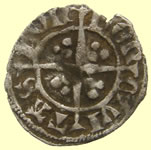 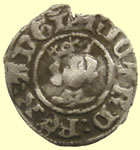 |
 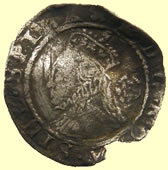 |
||
1377-1399 Richard II hammered silver farthing- Type 1 (c) Obv + RICARD:REX :ANGL Rev CIVI/TAS/ LON/DON - London mint |
1575 Elizabeth 1st hammered silver half groat | ||
|
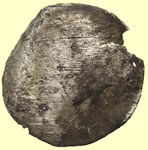 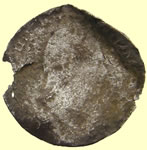 |
||
| 1733 Dutch Holandia milled silver 2 skillings | 1834 William IV milled silver groat | ||
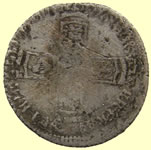 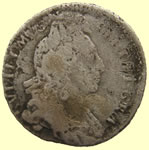 |
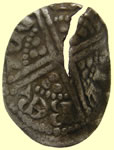 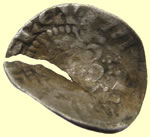 |
||
| 1696 William III milled silver sixpence | 1247 Henry III hammered silver voided long cross penny Obv HENRICVS REX Rev GIL/BER/TON/CAN - Moneyer Gilbert of Canterbury mint |
||
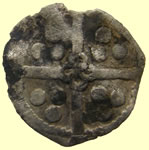  |
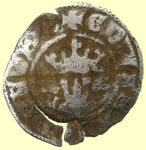 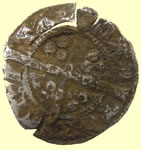 |
||
1454-1460 Henry VI hammered silver penny - Cross -pellet (York) Cross in quatrefoil at centre of reverse cross Satire each side of neck |
1344 Edward III hammered silver penny - Florin issue Obv +EDWAR ANGL DNS HYB Rev CIVI/TAS/CAN/TOR - Canterbury mint |
||
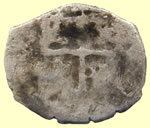 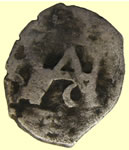 |
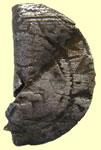  |
||
Spanish silver cob ? researching it "SPAIN. 1/2 Real, 1610-C. Segovia Mint. PCGS AU-50 Secure Holder. Philipp III |
Taco''s Edward hammered silver penny - needs fixing to ID properly | ||
 |
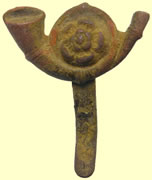 |
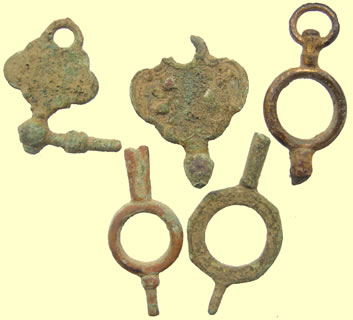 |
|
| 16thC Tudor clothing fastener | Military badge Rifle regiment |
Georgian watch winders | |
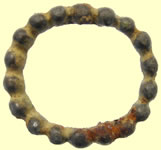 |
|||
Post-medieval copper-alloy buckle frame C AD 1650-1720 |
|||
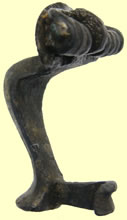 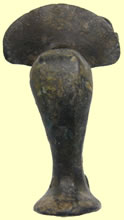 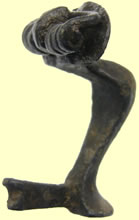 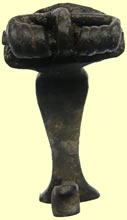 |
|||
Remarkable Roman fibular brooch that looks like it has never been in the ground ? Grave goods ? 2ndC Knee brooch - Semicircular headed types Ref Hattatt 469 |
|||
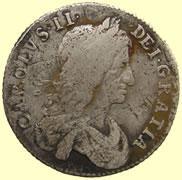 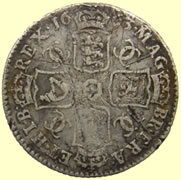 |
|||
| Rare as hens teeth find - 1663 Charles II milled silver shilling | |||
 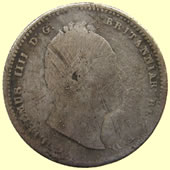 |
 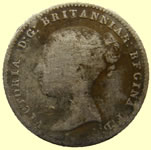 |
||
| 1834 William IV milled silver shilling | 1838 Victoria milled silver four pence | ||
 |
 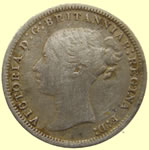 |
||
| Sizing of shilling (12 pence) to 3 pence | 1873 Victoria milled silver three pence | ||
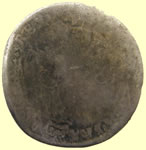 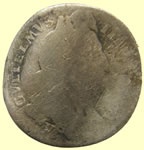 |
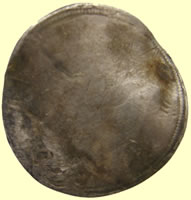 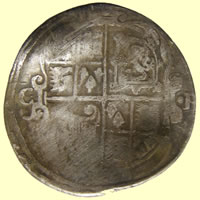 |
||
| 1696 William III milled silver sixpence - York mint | Very rare Exeter 1643 - 6 Charles 1st hammered silver shilling (12 pence) CR by Oval shield |
||
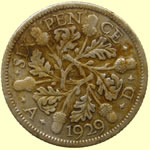  |
 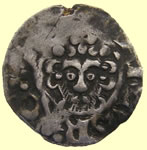 |
||
| 1929 George V milled silver sixpence | 1242-1247 Henry III hammered silver short cross penny - Class 8b3 Letter X in REX is now in the form of cross pommee Rev hENRICVS REX Rev NIC(hOLE ON - Moneyer Nichole of Canterbury mint |
||
  |
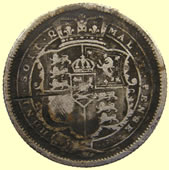 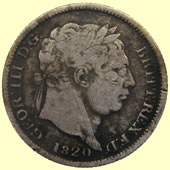 |
||
1195 Scottish William 1 The Lion hammered silver half penny Short cross and stars issue Class I Moneyer RAUL ON ROCEBU (Raul of Roxburgh) |
1820 George III milled silver shilling | ||
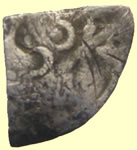 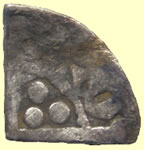 |
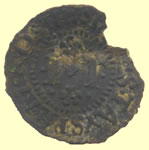 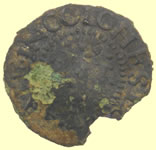 |
||
| 1247 Henry III hammered silver voided longcross farthing | 1668 G(iles) Taypsill of Colchester Essex hammered copper trade farthing See Norweb 1228a |
||
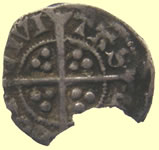 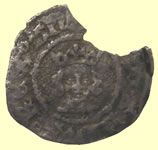 |
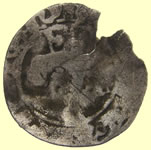 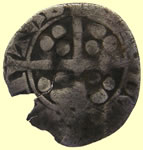 |
||
1361-9 Edward III hammered silver half penny - Type 17d Treaty series - annulet stops before and after REX - New crown with jewels between fleurs - Treaty 'X' - unbarred A's Obv + EDWARDVS:REX o AN Rev CIVI/TAS/ LON/DON - London mint |
1272 Edward 1st hammered silver penny Rev CIVI/TAS/ LON/DON - London mint |
||
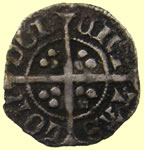 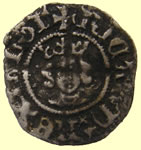 |
|
||
1377-1399 Richard II hammered silver farthing- Type 1 (e) Obv + RICARDxREX xANGL ' Rev CIVI/TAS/ LON/DON - London mint |
Medieval strap end - two rivet fixing | ||
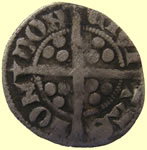 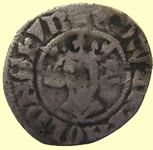 |
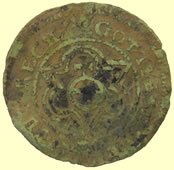 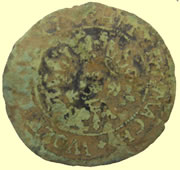 |
||
1344 Edward III hammered silver penny - Florin issue Obv +EDWAR ANGL DNS HYB Rev CIVI/TAS/ LON/DON - London mint |
1586 Hans Krauwincel II Rose orb Jetton | ||
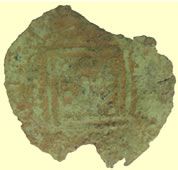 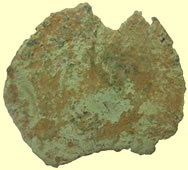 |
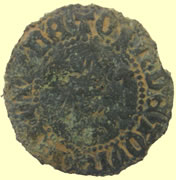 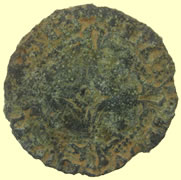 |
||
| 15thC French - Four fleurs de lis in a lozenge jetton | 13thC French jetton Obv 3 fleurs de lis DETOUR+DETOUR Rev Double stranded arcuate cross feuilly with pellet at centre PAI - DIEV -NOV NOIN |
||
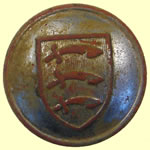 |
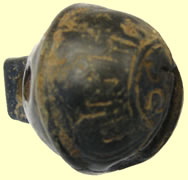 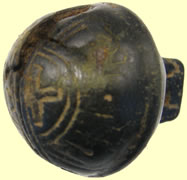 |
||
| Roman serrated back buckle tongue | Essex county button | 17thC crotal bell with great foundry marks | |
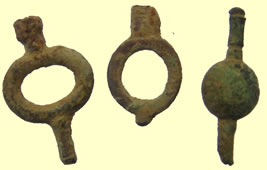 |
|
||
| Georgian watch winders | Medieval strap mount | ||
  |
 |
 |
|
1871 Silver ring - Maker RF Exeter hall mark |
19thc livery button | 17thC clothing fastener | |
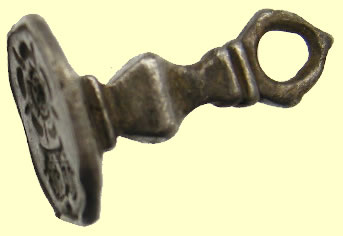 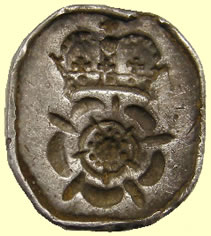 |
|||
17thC silver seal matrix - reported to museum as treasure Crown over Tudor rose 24.13mm H, 5.58g |
|||
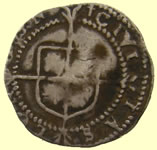 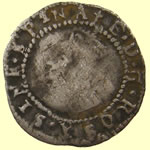 |
 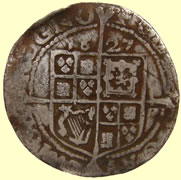 |
||
| 1580-1 Elizabeth 1st hammered silver penny - Latin cross mint mark | 1627 Charles 1st hammered silver sixpence - Negro's head mint mark Group B 2nd bust - Tower mint under Charles 1st |
||
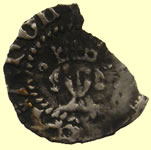 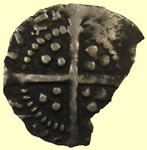 |
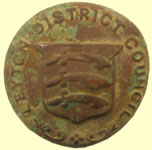 |
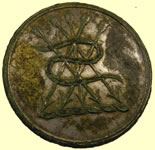 |
|
1413 22 Henry V hammered silver half penny - broken annulets by hair - Type 5 Obv ** REX ANGL Rev CIVI/TAS/LON/DON |
Leyton District council button | 19thC livery button | |
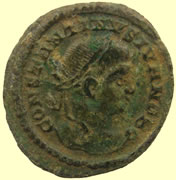 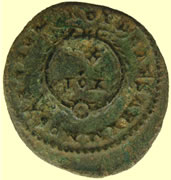 |
|||
Simply stunning condition Roman coin - one of the best I have ever seen dug - sent for ID This is a billon centenionalis of Constantine II as Caesar (he was only briefly Augustus from 337-340 - the shortest-lived of Constantine's 3 successor-sons). From the mint at Aquilea, it dates to 320-321. The reverse type is CAESARVM NOSTRORVM - "Our Caesars" - who, in addition to Constantine II, were Crispus and Licinius II - these last two would not finish out the decade. In fact, neither had more than 5 years left on Earth before meeting his separate and unfortunate end. Both, coincidentally, killed on orders of Constantine I. Read about them sometime - particularly Crispus - no current "Adult Soap Opera" has anything to compare with the rise and demise of Crispus as well as his scheming step-mother Fausta. Licinius Jr, on the other hand, was a politically incovenient loose-end to be "tied-up" in the normal Roman Imperial manner. The reference for this is RIC vol VII, (pg. 402), 74. RIC considers all the Votas of this series from Aquilea "rare", and this one is rated R5 - or very rare. Of course this frequency rating was based on a survey of pieces in public and important private collections in the mid 1960's. Very many fewer of them had been dug up at that time, and there was not much interest in the Æ of this era among the entrenched heads of numismatic society - elderly Victorian gentlemen who considered these pieces beneath their notice and not worthy of their time. This tended to make the collections of the time a bit light on this sort of material - a few representative pieces was all that was deemed necessary. However, an R5 rating from a Western mint like Aquilea probably translates into a legitimate scarcity today. It's not one of the specific items of the type you are most likely to encounter. They were produced in great quantity and variety from 15 or 20 mints during this era so the general type is not rare at all, but this specific combination of obverse, reverse, mint, etc, is scarce, comparitively speaking. Nice coin. Mark |
|||
13.53mm,1.24g Interesting 1stC Celtic bronze unit - appears to be a double sided horse which is not one I recognise - sent to CCI for ID and recording The bronze coin you sent a couple of days ago is an Essex Stag type, ABC 2312, with a backward-looking animal on the obverse (celticbronze2), possibly a stag but could be a horse, and a right-facing horse on the reverse. I've recorded it as 13.0617 John Sills |
|||
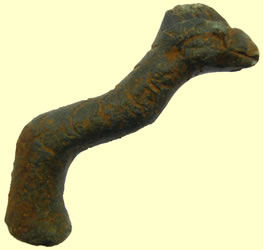 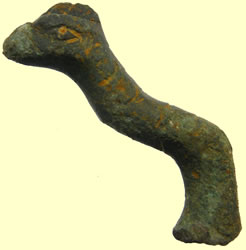 |
|||
| Roman military mount | |||
  |
 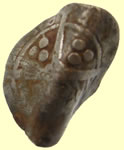 |
||
| Georgian bell trade weight - Crown G mark | 1327 Edward III hammered silver penny - quatrefoil with pellet at centre of reverse cross Obv EDWARDVS *** Rev CIVI/TAS/EBO/RACI - York mint |
||
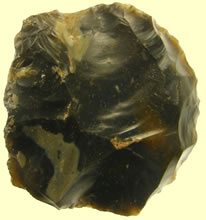 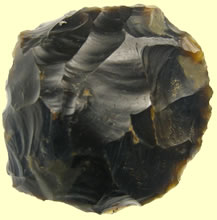 |
|||
11,000 BC flint scraper 47.47mm L, 47.63g |
|||
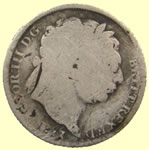 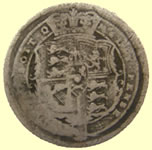 |
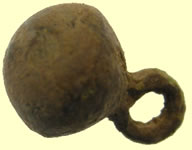 |
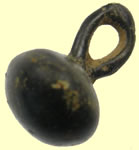 |
|
| 1817 George III milled silver sixpence | 16thC Tudor button | 16thC Tudor button | |
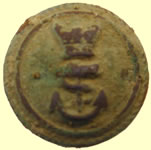 |
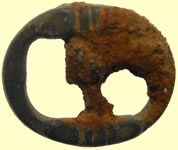 |
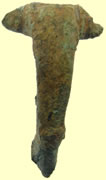 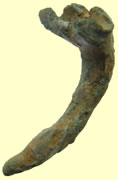 |
|
| RN Petty Officer - 1891 | Cast copper alloy double-looped sub-annular shoe or knee buckle with bevelled internal edge Circa 1650-1720 |
2ndC Roman fibular brooch | |
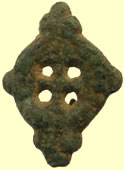 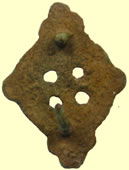 |
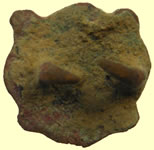 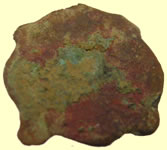 |
||
Early Post-Medieval copper alloy openwork lozengiform mount, |
A copper-alloy cast mount. The mount is quatrefoil in shape with a cusp in each angle. The reverse has two attachment lugs AD 1600 -1700 |
||
  |
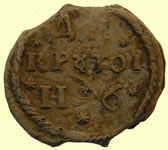 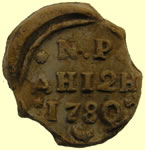 |
||
| Medieval mount | 1780 Russian lead bale seal | ||
|
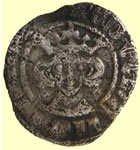 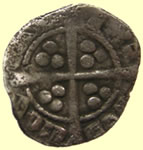 |
||
| Edwardian silver propelling pencil | 1344 Edward III hammered silver penny - Florin issue Obv EDWR ANGL DNS HYB Rev CIVI/TAS/LON/DON |
||
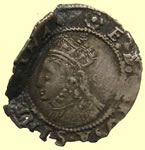 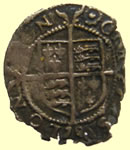 |
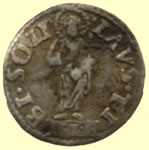 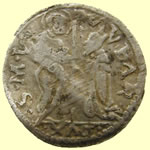 |
||
| 1565 Elizabeth 1st hammered silver penny - rose mint mark | (1501-1521). Soldino of Leonardo Loredan (LE.LAVS.DVX.SMV) Rev: Haloed figure of Christ holding a cross. Obv: LE LAV DVX S M V (Leonardo Lauredan, Doge. St Mark of Venice.) Doge kneeling before Saint Mark. |
||
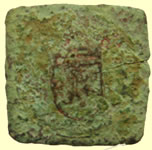 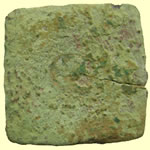 |
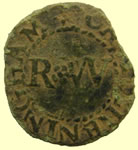 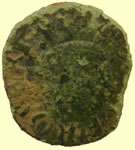 |
||
1475 AD 'Sun in shield' Bronze uniface coin weight for the 'ecu au soleil' French gold coin French manufacture, probably made in Paris |
17thC Robert Walford of Hedingham Castle Essex hammered copper trade farthing Ref Norweb 1300a |
||
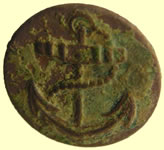 |
 |
  |
|
| Capt / Commander - 1774-1787 |
1500-1700 mount | Taco'd medieval hammered silver penny - Rev CIVI/TAS//CAN/TOR - Canterbury mint |
|
|
|||
Huge 11,000 BC flint hand axe - 100 mm L x 70.49 mm W Middle Stone Age(Mesolithic)
|
|||
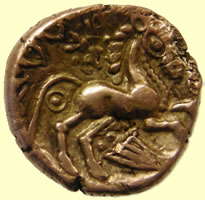 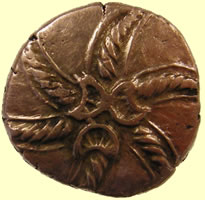 |
|||
Addedomaros 45BC Celtic gold stater - sent to CCI for recording 18.32mm, 5.48g I've recorded it as 13.0617 and the nice new Addedomaros is 13.0618, good to see a bit of the legend on the reverse. All the best John
|
|||
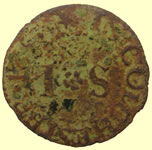 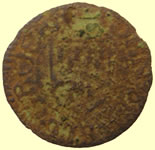 |
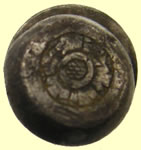 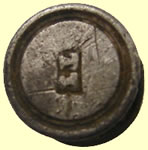 |
||
1667 John Sewell, grocer of Colchester Essex hammered copper trade farthing Ref Norweb 1300a |
19th Royal navy silver collar stud Maker - Thomas Townsend |
||
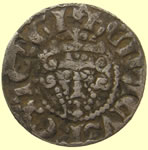 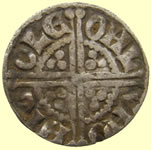 |
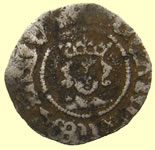 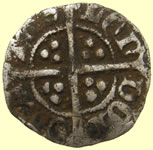 |
||
1247 Henry III hammered silver voided long cross penny -Class 2a Obv hENRICVS REX TERCI Rev NIC/OLE/ONL/VND - Monyer Nicole of London mint |
1377-1399 Richard II hammered silver farthing- Type 2c (i) Wide face, tall central fleur Obv + RICARDxREX xANGL ' Rev CIVI/TAS/ LON/DON - London mint
|
||
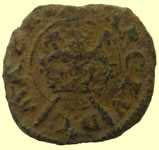 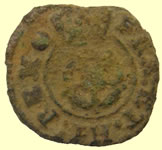 |
 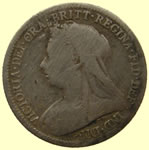 |
||
| 1634 Charles 1st hammered copper rose farthing | 1900 Victoria milled silver sixpence | ||
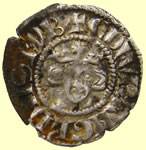 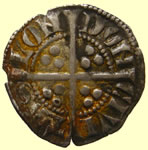 |
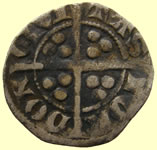 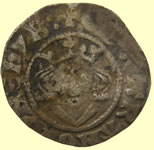 |
||
1344 Edward hammered silver penny - Cross 1 - Florin issue Obv EDWR ANGL DNS HYB Rev CIVI/TAS/LON/DON |
1272 Edward 1st hammered silver penny - Comma stops after HYB - Class 10cf4 Obv EDWAR ANGL DNS HYB Rev CIVI/TAS/LON/DON |
||
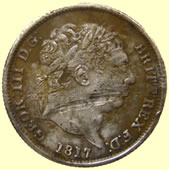 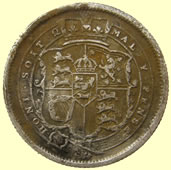 |
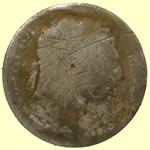 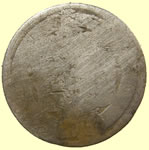 |
||
| 1817 George III milled silver shilling | 1817 George III milled silver sixpence | ||
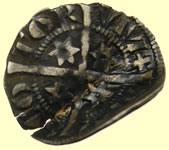 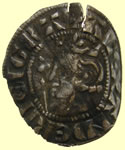 |
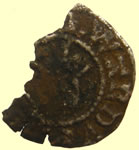 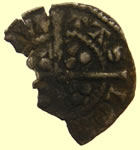 |
||
1280 1286 Alexander III Scottish hammered silver penny - 2nd Coinage Stars have 6 points Ref SA3HD-005 Obv ALEXANDER DEI GRA Rev SCO/TOR/VM+/REX
|
1310 Edward 1st hammered silver half penny penny Obv EDWARDVS **** Rev CIVI/TAS/LON/DON |
||
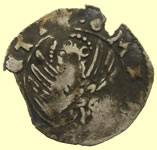 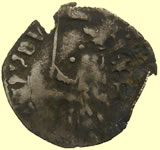 |
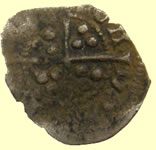 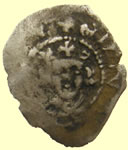 |
||
| Venetian Soldino issued by Doge Michele Steno (1400-1413). Obv: MICHAEL STEN' DVX (Michele Steno, Doge). Doge standing left, holding standard. Rev: S MARCVS VENETI (Saint Mark of Venice). Winged and nimbate lion of Saint Mark facing. |
1272 Edward 1st hammered silver farthing Obv EDWAR **** Rev CIVI/TAS/LON/DON |
||
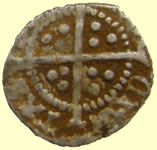 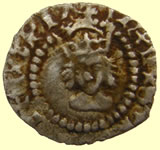 |
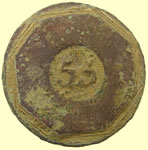 |
||
1526-44 Henry VIII hammered silver halfpenny - 'brush' hair - long cross fourchee - 2nd coinage - Type 1 B(f) Obv + hxDxGxROSAxSIExSPIA' Rev CIVI/TAS/** 0.33g,11.07mm |
55th Regiment of Foot 1800-1820 |
||
  |
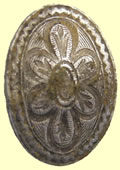 |
 |
|
1247 Henry III hammered silver voided long cross half penny Obv hENRICVS REX Rev NIC/OLE/ONL/VND - Monyer Nicole of London mint |
Georgian silver cuff link | Georgian watch winder | |
 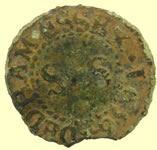 |
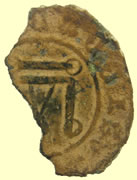  |
||
1656 Samuel Salter of Dedham Copper trade farthing |
15thC French Chatel Tournois Jetton Obv Traditional Chatel Tournois (Castle of Tours) SIB IIOIIIEIII BOIII II I Ref Mitchener 741 |
||
 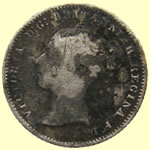 |
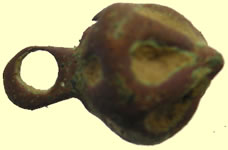 |
||
| 1854 Victoria milled silver four pence | 16thC Tudor button | ||
English card game authority, "the Father of whist"
|
|||
18thC Hoyle token - man playing cards Edmond Hoyle (1672 – August 29, 1769was a writer best known for his works on the rules and play of card games. The phrase "according to Hoyle" came into the language as a reflection of his generally-perceived authority on the subject;since that time, use of the phrase has expanded into general use in situations in which a speaker wishes to indicate an appeal to a putative authority. |
|||
 |
 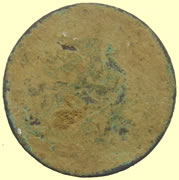 |
||
| Medieval book clasp | 1808 George III milled copper coin with interesting over strike | ||
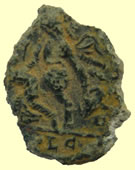 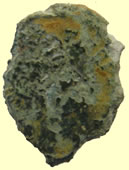 |
  |
||
Roman bronze coin sent for ID Believe it or not I can tell you quite a lot about the coin from which this chunk is all that remains. It is a FEL TEMP REPARATIO reduced majorina by Constantius II - these were struck mainly between 350-361. Although they were also struck for Constantius Gallus Ceasar and Julian as Caesar, at the time the convention was that only Augusti were portrayed with diadems while Caesars were shown bare-headed. Since there are traces of the diadem visible, it must be Constantius II, the longest-lived of Constantine's sons and the one who served the longest as Augustus (337-361). Mark |
1217/8 Henry III hammered silver short cross cut halfpenny - Class 7a - barred A Obv HENRICVS REX Rev + ABE *** - Moneyer Abel of London mint |
||
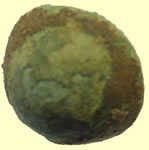  |
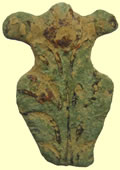 |
 |
|
| 14thC discoidal button | 17thC decorated sword hanger fitting | Medieval D buckle | |
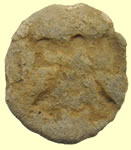 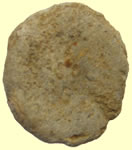 |
 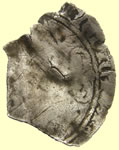 |
||
| Crude14thC Angel lead coin weight | 1553 Mary hammered silver groat | ||
1346-1361 Edward III gold half noble 2.52g (full weight 4.12g), 25.10mm |
|||
  |
|||
Pretty 18 carat emerald gold ring - no hall marks and each stone is a different shaped cut It could be a lot older than it looks so reported to museum as potential treasure 2.46g, 19.71mm |
|||
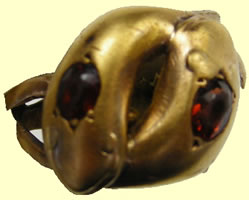 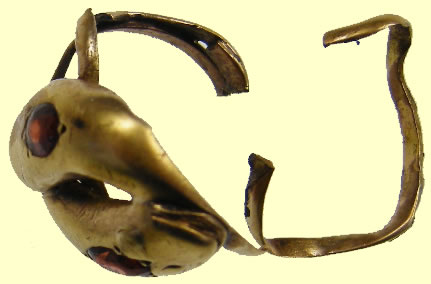 |
|||
Another 18 carat gold ring with rubies - no hall marks It could be a lot older than it looks so reported to museum as potential treasure 3.76g, 4.16mm |
|||
 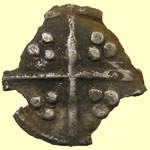 |
  |
||
| Medieval hammered silver long cross penny | C10thC Saxon mount | ||
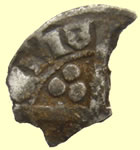 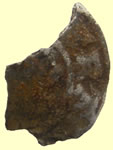 |
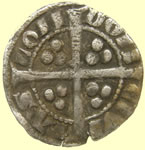 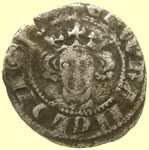 |
||
1272 Edward hammered silver penny Obv **AR AN *** Rev /EME/ - Durham mint |
1344 Edward hammered silver penny - Florin issue Obv EDWR ANGL DNS HYB Rev CIVI/TAS/LON/DON |
||
  |
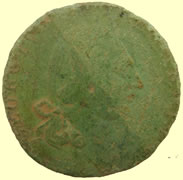 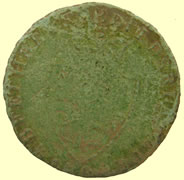 |
||
| Georgian crucifix | George III spade gold guinea gaming token | ||
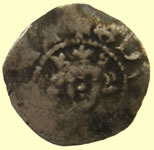 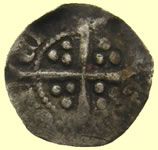 |
|
||
1327 Edward III hammered silver farthing - Type 1 Obv +EDWARDVS REX A* Rev CIVI/TAS/LON/DON - London mint |
Medieval harness hanger | ||
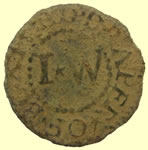 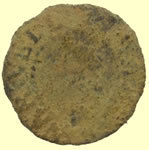 |
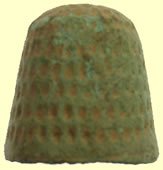 |
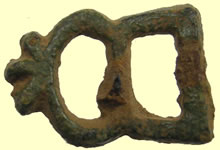 |
|
| Unlisted in Norbweb ref books, 17th I Warwell, drapers of Boxted Essex hammered copper trade farthing | 16thC thimble | A complete cast copper alloy buckle of post-medieval date. The buckle is a double loop asymmetrical shape Circa 1575- 1700 |
|
 |
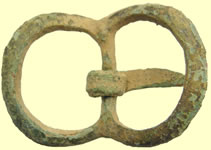 |
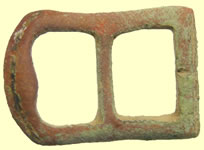 |
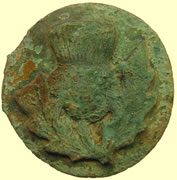 |
| Unknown East Bank issued 17thC hammered coppe rtrade farthing | Post Medieval cast copper alloy single loop buckle frame. 1500-1650 AD |
A complete cast copper alloy buckle of post-medieval date. The buckle is a double loop asymmetrical shape Circa 1575- 1700 |
Scottish regiment badge |
|
|||
20thC Continental 9carat gold and platinum diamond ring - Marked PLAT 9 CT 18.82mm dia, 1.73g |
|||
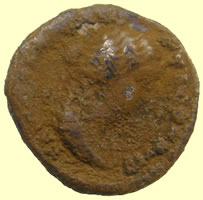 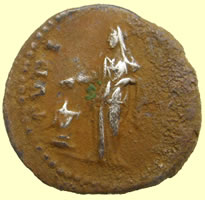 |
|||
2ndC Roman silver coin sent for ID - cooking to remove crust (Ed) We will need to see what appears on the obverse - particularly in the legend - before I can be completely certain who this is beyond "an Antonine woman". It's highly unlikely to be Faustina Sr. since the main body of her coinage is posthumous and the reverse type - PVDICITIA - would be a quality or virtue only of a living woman. I suspect Faustina Jr. for the following reasons: The shape of the head and the hair style seem to strongly suggest the Antonine era, and although it could be either Faustina Jr. (issued under Antoninus Pius or Marcus Aurelius), Lucilla or Crispina, the length of the obverse legend suggested under the encrustation is likely only on a coin of Faustina Jr. But we'll have to wait and see what the cooker reveals on the obverse. Mark |
|||
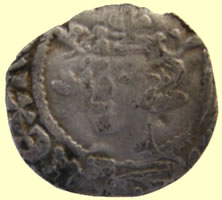 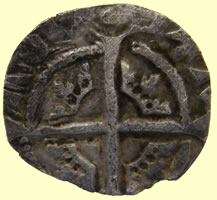 |
|||
Totally stumped on this coin - It has four crowns in the quadrants and the only King with crowns is James II of Scotland and this is not one of those. Also the bust is facing left not face on ?? Must be continental ? 0.65g, 14.52mm Edward III as duke of Aquitaine
Edward III from Aquitaine (Elias 56). The date of these coins, which are often found in small quantities in English and Scottish hoards, is uncertain, but probably in the 1330s H.R. Duncan Elias, Anglo-Gallic Coins, no. 56 |
|||
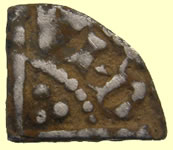 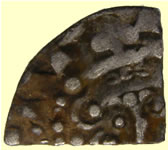 |
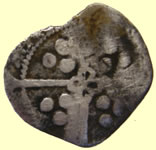 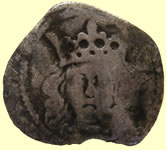 |
||
1247 Henry III hammered silver voided longcross farthing Obv VRh - Durham mint |
1422 Henry VI hammered silver penny - York mint - Archiepiscopal issue Quatrefoil with pellet at centre of reverse cross |
||
  |
|
||
1422 Henry VI hammered silver penny - York mint - Archiepiscopal issue Quatrefoil with pellet at centre of reverse cross |
1390 - 1420 AD Medieval decorated buckles with integral box chape | ||
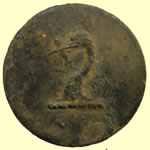 |
 |
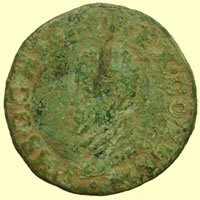  |
|
| 19thC livery button | WWII Royal Airforce button | 15thC Continental jetton - Working on ID Obv PBS DG HIB REX CO ZEA Rev PACE |
|
 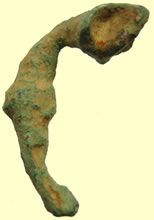 |
|||
| Huge 1st/2ndC Roman trumpet brooch | |||
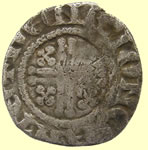 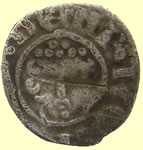 |
  |
||
1216 Henry III hammered silver short cross penny - Type 7c Obv HENRIVCVS REX Rev HENRI ON C(ANTE( - Moneyer Henri of Canterbury mint |
1247 Henry III hammered silver voided longcross halfpenny Rev VID/ - Moneyer David of London mint |
||
  |
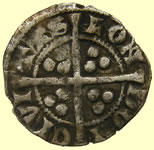 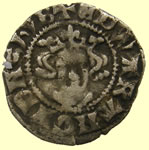 |
||
| 1634 Cahrles 1st hammered copper rose farthing | 1272 Edward 1st hammered silver penny - Class 10cf2 Obv EDWAR ANGL DNS HYB Rev CIVI/TAS/LON/DON |
||
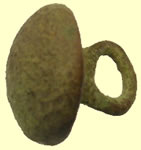 |
 |
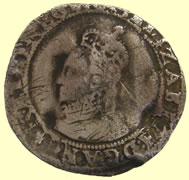 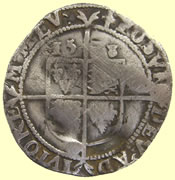 |
|
| 16thC Tudor button | 1500-1700 mount | 1578 Elizabeth 1st hammered silver sixpence - Greek cross mint mark | |
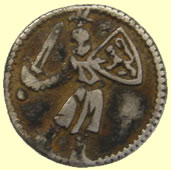 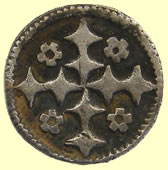 |
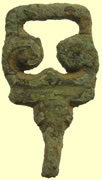 |
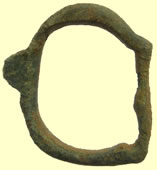 |
|
Bruges, after 1259, petit denier with lozenge cross; J. Ghyssens, Les petits deniers de Flandre des XIIe at XIIIe siècles, no. 437 (p. 159 and pl. 13) or 435 if the knight has spurs.
Martin Allen |
16thC Tudor clothing fastener | Medieval D buckle | |
 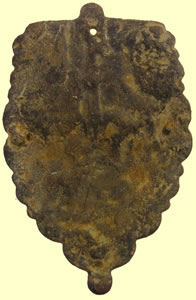 |
|||
| Huge medieval beehive mount with 4 rivet fixings | |||
 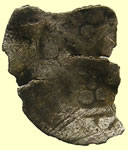 |
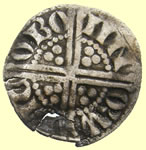 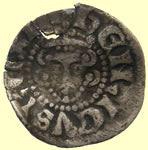 |
||
| Medieval hammered silver penny | 1247 Henry III hammered silver voided longcross penny - Class IIIa Obv hENRICVS REX IAC/OBO/NN/ORW - Moneyer Jacob of Norwich mint |
||
 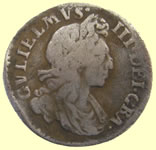 |
 |
 |
|
| Rare find 1701 William III milled silver three pence | 20thC George Royal Engineers button | Infanterie de ligne (1871-1916) |
|
 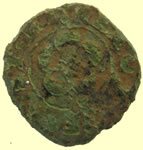 |
  |
||
| 1634 Cahrles 1st hammered copper rose farthing | 1604 James 1st hammered silver half groat | ||
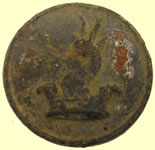 |
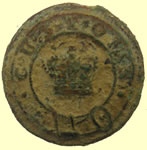 |
  |
|
| 19thC livery button | 19thC Customs button | 1625 Charles 1st hammered silver penny | |
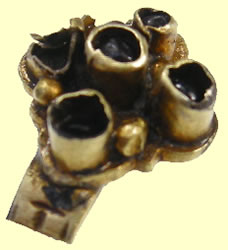 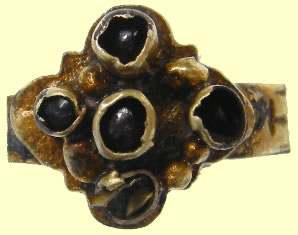 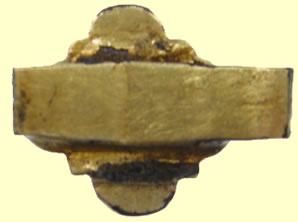 |
|||
Medieval gold ruby ring - reported as treasure to museum 4 of the tiny rubies remain still captured in their settings |
|||
 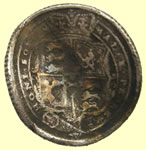 |
 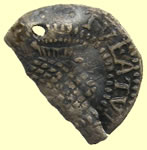 |
||
| 1816 George III milled silver sixpence | 1604 James 1st hammered silver penny | ||
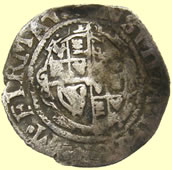 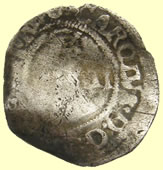 |
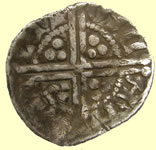 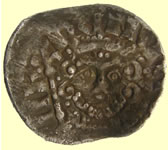 |
||
| 1639-40 Charles 1st hammered silver half groat | 1247 Henry III hammered silver voided long cross penny- Class 5 Obv HENRICVS REX III Rev ONC/ANY/WIL/LEM- Moneyer Willem of Canterbury mint |
||
 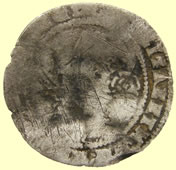 |
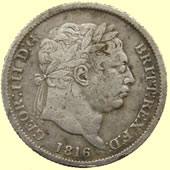 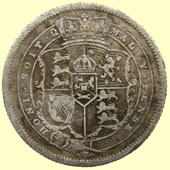 |
||
| 1574 Elizabeth 1st hammered silver 3 pence | 1816 George III milled silver shilling (12 pence) | ||
 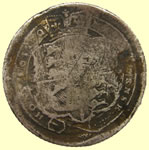 |
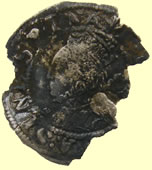 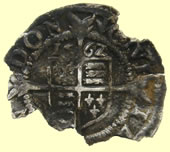 |
||
| 1817 George III milled silver sixpence | 1562 Elizabeth 1st hammered silver half groat | ||
  |
|||
| 2ndC Roman silver coin - 'cooking' to remove crust (Dennis) | |||
  |
|||
| 16thC Tudor clothing fastener | |||
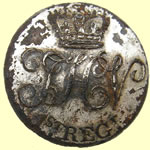 |
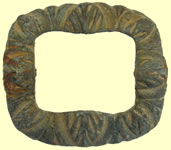 |
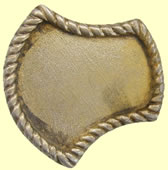 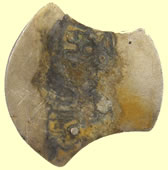 |
|
C 1801 - 19thC Tendering Light Horse Volunteers 1st Reg |
Georgian shoe buckl | Victorian gold mount | |
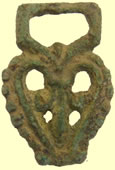 |
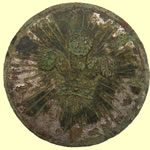 |
  |
|
| 17thC clothing fastener | 19thC Royal fuseliers button | 1639-40 Charles 1st hammered silver half groat | |
 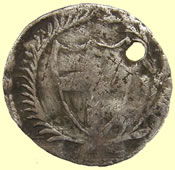 |
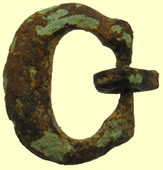 |
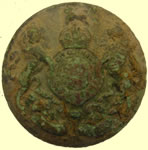 |
|
| 1649 Commonwealth hammered silver half groat | Roman buckle | 1890 General service Army button | |
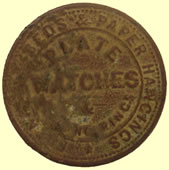 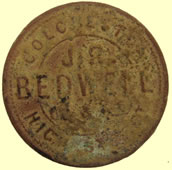 |
  |
||
| 19thC JR Bedwell of High St Colchester token | 1465-1476 Edward IV hammered silver penny - York issue Type XVIiv Archiepiscopal issue Quadrefoil with pellet at centre of reverse cross - Rose by neck |
||
  |
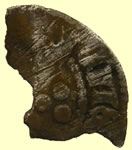  |
||
| Medieval hammered silver long cross penny | Medieval hammered silver long cross penny | ||
  |
|||
| Georgian seal matrix | |||
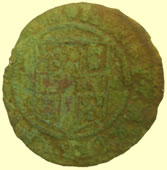 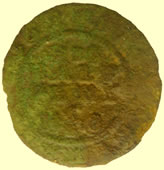 |
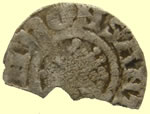 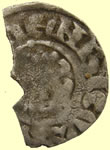 |
||
| 1669 Henry Carter, surgeon of Manningtree Essex ''His Half Penny' hammered copper trade farthing | 1217-18 Henry III hammered silver short cross penny - Type 7b-7c Obv hENRICVS ** Rev ** ND ON SANT - Moneyer Simvnd of Bury St Edmunds mint |
||
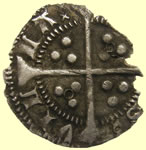 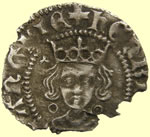 |
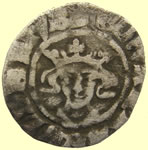  |
||
1422-1460 Henry VI hammered silver penny - annulet issue-extra annulet in opposing qtr's - annulets by neck Obv HENRICVS REX ANGLIE Rev VIL/LAx/CAS/ISIE - Calais mint |
1272 Edward Ist hammered silver penny Obv EDWAR ANGL DNS HYB Rev VIL/SCIE/DMV/NDI - Bury St Edmunds mint |
||
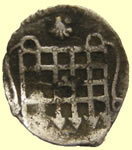  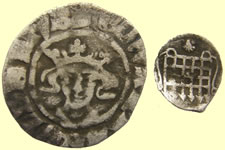 |
|||
Tiny 1584- 6 Elizabeth 1st hammered silver half penny - Escallop mint mark Comparison in size to a hammered silver penny |
|||
  |
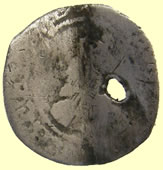 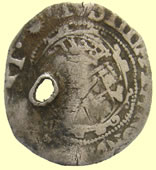 |
||
| 13thC Edward 1st English Jetton | 1645-6 Charles 1st hammered silver half groat - Sun mint mark | ||
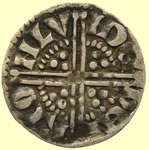 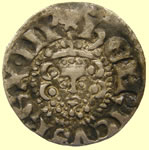 |
 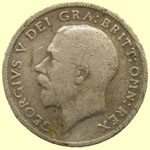 |
||
1247 Henry III hammered silver voided long cross penny - Class 3a Obv HENRICVS REX III Rev hEN/RIO/NLV/NDE/- Moneyer Henri of London mint |
1922 George V milled silver sixpence | ||
 |
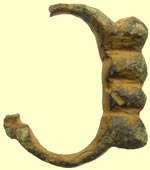 |
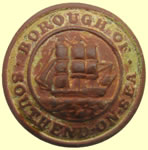 |
|
| 15thC lead token | Roman buckle | 19thC Borough of South end on sea button | 15000-1700 mount |
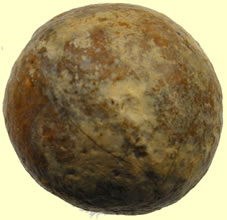 |
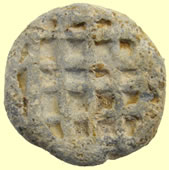  |
||
| Great eyeball find - 16thC stone cannon ball - 2 inch dia | Medieval trade weight - Templer cross on Rev | ||
 |
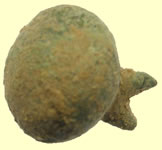 |
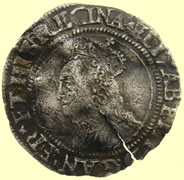 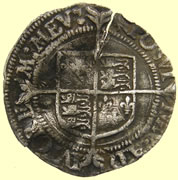 |
|
| 17thC lead token | 16thC Tudor button | 1573-8 Elizabeth 1st hammered silver sixpence | |
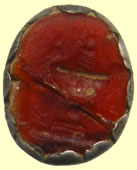 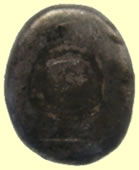 |
 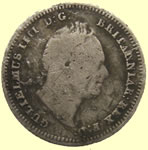 |
||
| Georgian silver intaglio stud | 1837 William IV milled silver groat (4 pence) | ||
 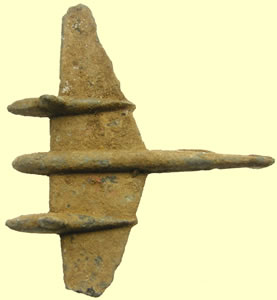 |
|||
| Great find WWII toy Mosquito aeroplane | |||
|
 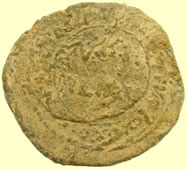 |
||
| Crude medieval gilded srtap end - two rivet fixings | PPost medieval lead bale seal | ||
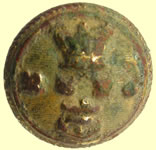 |
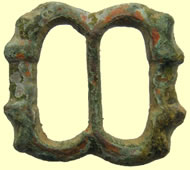 |
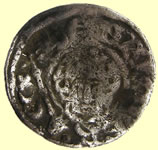 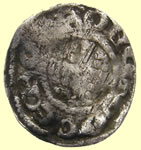 |
|
UNITED KINGDOM Royal London Yacht Club R. T. Y. C. - R. T. Y. C. London, England In use 1837 - 1901 |
Cast copper alloy trapezoidal shoe or knee buckle with concave sides 1660-1720 |
1204/5 King John hammered silver voided short cross penny - Class 5 Obv hENRICVS REX Rev ON C+ANC ERNAVD - Moneyer Ernavd of Canterbury mint |
|
More finds on 2013 Sept Finds page 1 More finds on 2013 Sept Finds page 2 More finds on 2013 Oct Finds page 2 |
|||


